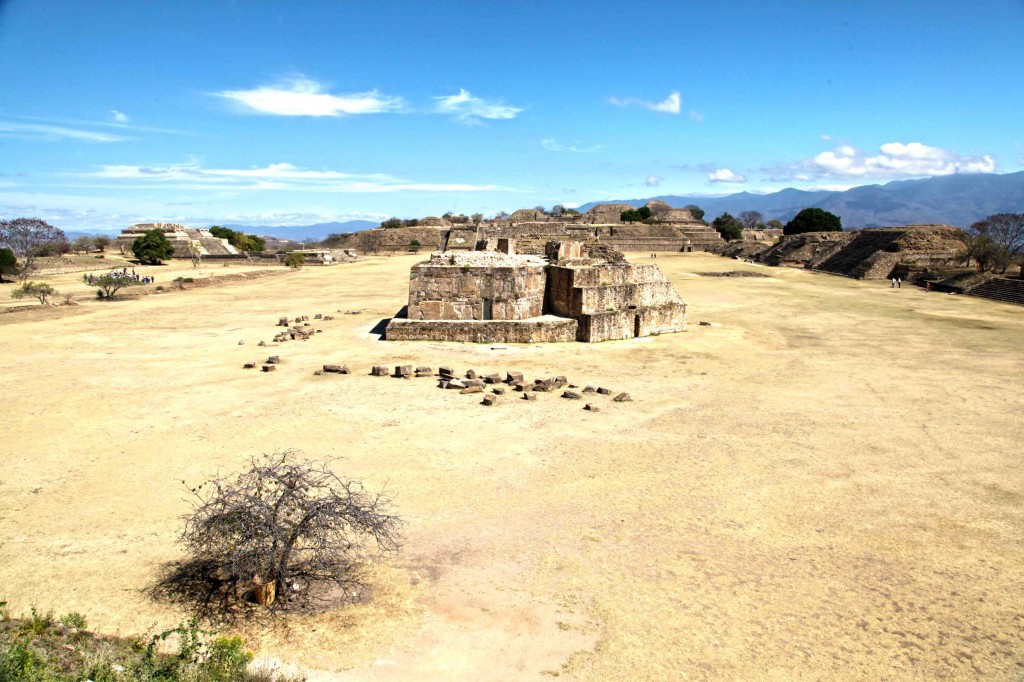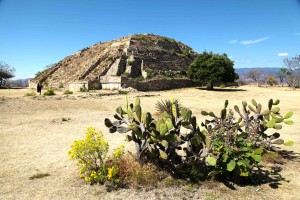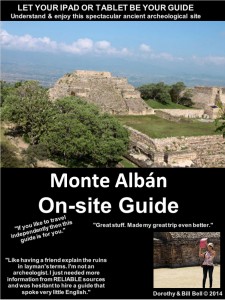Unclear about the name’s origin

Potentially Zapotec “Sacred Hill” or
Spanish named for a soldier or “Alban Hills” in Italy
HOURS
The Oaxaca Valley in South Central Mexico is the capital of the Zapotec– the ancient Mesoamerican cultu sometimes known as the cloud people. The ancient capital of the culture was Monte Albán, a fortress city beautiful ceremonial center carved into the mountain making plateaus and plazas.
The valley was originally inhabited by hunter gatherer trib of Indians who travelled south and around 1500 BC and later developed agricultural skills and formed small communes. These peoples became known as the Zapot A people called the Chatino, a culturally militaristic people from south west Oaxaca fought both the Zapotec and Mixtec (another important Mesoamerican society from west Oaxaca state) for dominance in the Valley.
From 1150 to 800 BC Oaxaca developed strong trading and cultural ties with the Olmec, the most advanced
culture in America. The Olmec traded goods for extracted raw materials and the Zapotec gained cultural expression from an advanced society.
Around 800 BC various cultures emerged throughout southern Mexico and the Olmec dominance diminish Trade with other closer societies became more practical as larger populations emerged throughout the Oaxaca Valley and Southern Mexico. Three distinct societies developed in the 3 branches of the Valley wi “neutral zone” in the middle.
Around 500 BC, carvings indicate that battles took place between the competing cultures. The Zapotec wh occupied the Etla branch of the valley – one of the three major valley arms – emerged as the dominant so The Zapotec settlement of San Jose Mogote had a population base of around 1200 to 1500 people.
Between 500 and 300 BC, Monte Albán was quickly established in the central zone atop a mountain overlooking the three valleys. This locati was both strategic for overseeing the passage of trade and population movement, but also defensive in terms of walls and natural elements forming a barrier to attack.
Monte Albán’s population increased dramatically just as Mogote and other Zapotec communes diminished. It is believed that the ruling elite Mogote strategically planned the Monte Albán in advance of moving th capital.
The population of Monte Albán reached 30,000 people between 0 and 500 AD.

The Danzantes – Disemboweled or castrated enemy
The city was fortified with walls and natural elements from 100 BC to 200 AD and expansion and building continued at a rapid pace. The city had no source of water and relied on essentials from the estates on the hills and the valley below. Likely the site was primarily a religious and residential area for the aristocrats as well as a military and trade center.
Open Daily from 8 am to 4:30 pm. There is a booth at the gate who will charge you the standard fee & extra for video cameras.
Admission 2013 59 pesos. Free on Sundays for nationals and Mexican residents.
Allow at least 2 to 3 hours – more if you like to climb, take pictures anf read every interpretive sign.
RECOMMENDATIONS
You can stroll safely undisturbed throughout the site especially if you arrive frst thing in the morning. Take good shoes as there is plenty of climbing- and a fair amount memory and batteries for your photographs.
There are no restaurants or food vendors so take water and insect repellant
Dress according to the season you are visiting.
Admission – 59 pesos

Monte Albán, Oaxaca – Planning Your Visit
Monte Albán, Oaxaca – Historical Notes
Monte Albán, Oaxaca – Introduction to the Walking Tour
Monte Albán, Oaxaca – Interactive Map
Monte Albán, Oaxaca – Eastern Group
Monte Albán, Oaxaca – Southern Platform
Monte Albán, Oaxaca – Central Plaza Buildings
Monte Albán, Oaxaca – Western Group
Monte Albán, Oaxaca – Northern Platform
Monte Albán, Oaxaca – The Tombs
Monte Albán, Oaxaca – The Museum